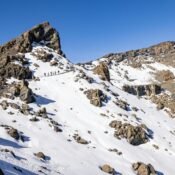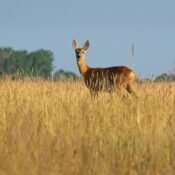
Why Lake Natron Should Be on Your Tanzania Safari Itinerary
Tanzania is known for its world-famous national parks, awe-inspiring wildlife, and jaw-dropping landscapes. Most safari-goers immediately think of the Serengeti, the Ngorongoro Crater, or Mount Kilimanjaro—and rightly so. But tucked away in the northern reaches of the country lies a hidden gem that offers a completely different kind of adventure: Lake Natron.
Remote, otherworldly, and hauntingly beautiful, Lake Natron is unlike any other destination in East Africa. This alkaline lake, nestled at the foot of the Great Rift Valley near the Kenyan border, surprises visitors not with lush greenery or big game sightings, but with its surreal scenery, fascinating ecological importance, and deep cultural ties. For those seeking something beyond the traditional safari experience, Lake Natron is a must-see.
What Makes Lake Natron Unique?
Lake Natron is one of the most extreme environments in Tanzania. It is a soda lake, meaning it has high levels of sodium carbonate and other minerals, giving its waters an unusual chemical composition. These minerals result in extremely alkaline conditions, with pH levels as high as 10.5—similar to ammonia.
Its surface often appears red or pink due to the presence of microorganisms and algae that thrive in such harsh conditions. These colors contrast beautifully with the surrounding stark terrain and the mirror-like stillness of the lake, creating a dreamlike visual landscape.
While it might seem lifeless at first glance, Lake Natron is full of surprises.
Flamingo Breeding Grounds
Despite its harsh chemistry, Lake Natron is the single most important breeding site for lesser flamingos in East Africa. In fact, around 75% of the world’s lesser flamingos are born here.
The reason? The lake’s extreme conditions protect the flamingos from predators. The caustic water acts as a natural moat, keeping their nesting sites safe. During the breeding season, the lake is dotted with thousands of flamingos, turning it into a sea of pink feathers.
Watching these elegant birds dance, feed, and soar across the reflective water is one of the most magical sights you’ll ever witness.
Ol Doinyo Lengai: The Mountain of God
Overlooking Lake Natron is the active volcano Ol Doinyo Lengai, also known as the “Mountain of God” in the Maasai language. This striking mountain is the only known active volcano in the world that erupts natrocarbonatite lava—a rare type of lava that is much cooler than typical lava and appears black or gray instead of red.
For adventurous travelers, hiking up Ol Doinyo Lengai is a thrilling, though challenging, experience. Most ascents begin around midnight to reach the summit by sunrise, offering panoramic views of the Rift Valley and the shimmering lake below.
Even if you don’t climb it, the mountain adds a dramatic backdrop to the already surreal scenery of the lake.
Wildlife and Scenery
Though not a classic game-viewing area, Lake Natron is still home to some fascinating wildlife. You might see zebras, ostriches, gerenuks, and gazelles roaming the dry plains around the lake. The area is also excellent for birdwatching, with over 100 species recorded here.
The landscape itself is a major draw. Think lava fields, hot springs, salt flats, waterfalls, and gorges. The land is raw and untouched, evoking a sense of true wilderness. And because it’s far less touristy than other destinations, you’ll often feel like you have the whole place to yourself.
Ngare Sero Waterfalls: An Unexpected Oasis
If you’re exploring Lake Natron, a visit to the Ngare Sero Waterfalls is a must. Located near the lake’s edge, this lush and shady gorge is a complete contrast to the arid surroundings. A short hike through volcanic rock formations and riverbeds leads to a hidden paradise where you can swim in cool, refreshing water beneath cascading falls.
It’s a favorite among visitors because of the relief it provides from the heat and the sheer unexpectedness of finding a waterfall in such a stark environment.
Cultural Encounters with the Maasai
Lake Natron lies within traditional Maasai territory, and spending time in this region gives you the opportunity to connect with one of Tanzania’s most iconic communities. Many local guides and camp staff are Maasai, offering insights into their customs, way of life, and connection to the land.
You may visit a Maasai boma (homestead), learn about traditional medicines, or hear stories of how they coexist with nature and revere Ol Doinyo Lengai as a spiritual mountain. These cultural experiences add depth and humanity to your trip.
Best Time to Visit Lake Natron
The best time to visit Lake Natron is during the dry season, from June to October, when the lake is more accessible, and the weather is favorable for hiking and exploring.
However, the flamingo breeding season typically begins in late September and runs into early December, depending on the year’s rainfall and environmental conditions. If seeing thousands of flamingos is a priority, timing your visit around this window will be ideal.
Keep in mind that the area can be hot and arid, with daytime temperatures often reaching over 40°C (104°F), especially in the dry season. Bring plenty of water, sun protection, and lightweight clothing.
How to Get There
Lake Natron is located in northern Tanzania and can be accessed via Arusha or Lake Manyara, either by road (4×4 recommended) or as part of a customized safari itinerary. The roads can be rough and dusty, but the scenery along the way—volcanic hills, Maasai villages, and open plains—is a journey in itself.
There are also small airstrips nearby, and some tour operators offer chartered flights for quicker access.
Where to Stay
While you won’t find luxury lodges like in Serengeti or Ngorongoro, Lake Natron has excellent eco-friendly camps and tented lodges that offer comfort without disrupting the natural environment. Some are perched on hills overlooking the lake, offering incredible sunrise and sunset views.
Many accommodations include guided tours, nature walks, cultural visits, and even night hikes to the volcano in their packages.
Why It Belongs on Your Safari Itinerary
Lake Natron offers something that few other safari destinations do: a journey into the unexpected. It’s not about ticking off the Big Five or sipping champagne on a game drive. It’s about discovery, solitude, and connection—with nature, with culture, and with a side of Tanzania that’s still largely untouched by mass tourism.
Adding Lake Natron to your itinerary means stepping off the beaten path and into a world that feels otherworldly yet deeply connected to the Earth’s ancient rhythms. For photographers, nature lovers, and curious travelers, it’s a place that delivers awe and inspiration at every turn.
Whether you’re flamingo-watching at sunrise, swimming in a hidden waterfall, hiking a volcano, or simply gazing across a blood-red lake as the sun dips behind the hills, Lake Natron will leave you with memories—and photographs—that feel almost too surreal to be real.
So the next time you plan a safari in Tanzania, don’t just go for the obvious. Make room for Lake Natron. Trust us—it’s worth the detour.




